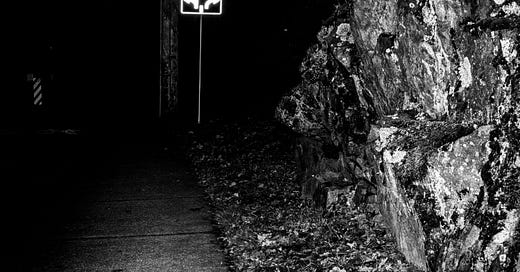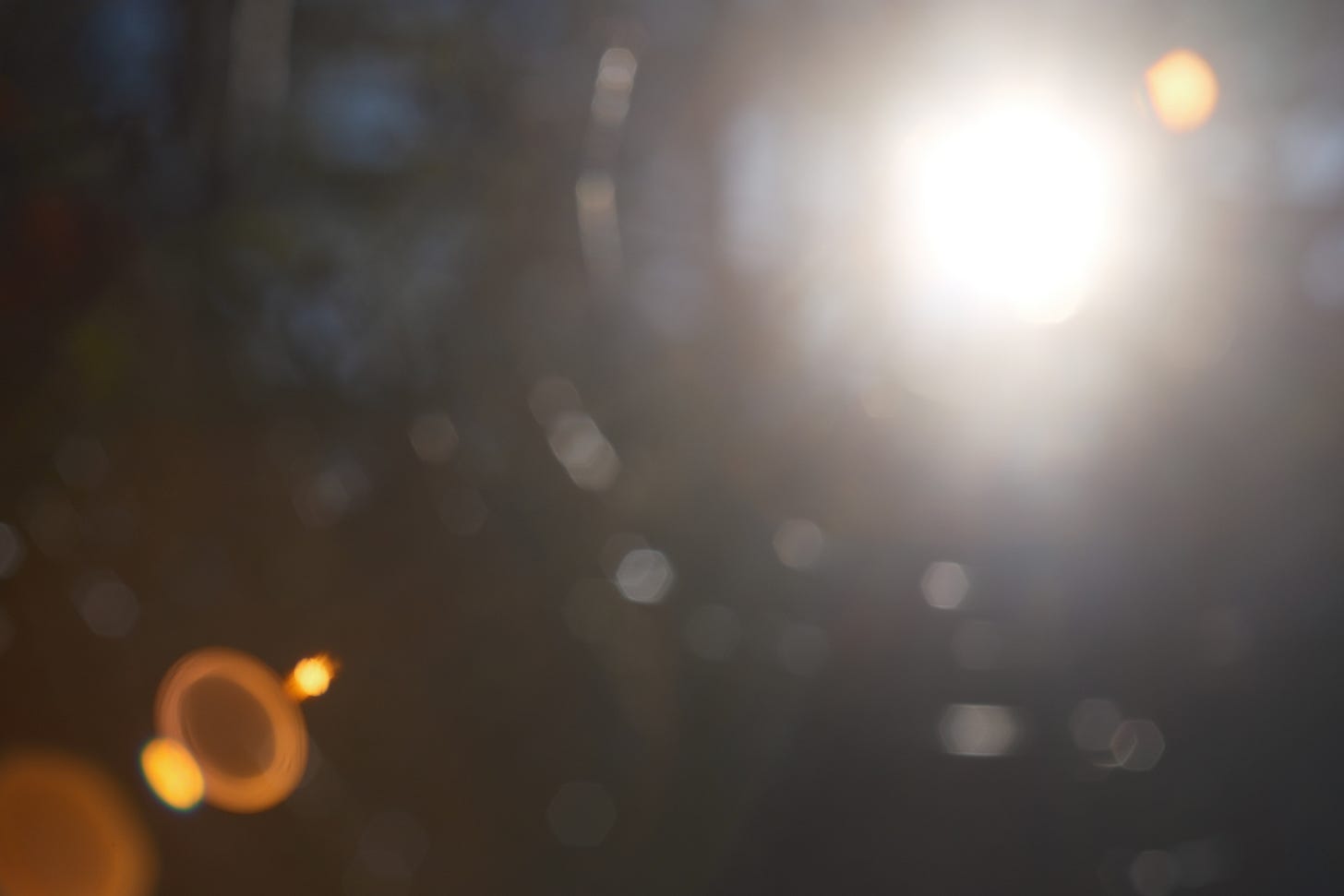Before I begin, a note to you dear reader
The last time I had coffee with Mike he had not yet written his Rounds 1 and 2 post. He said that he had been considering who the audience was and how to write for them. He decided to write for one particular person (a much appreciated mutual friend of ours) as a representative of the audience. I certainly hope you all found the resulting post to be as interesting and engaging as I did.
I mention this conversation because it reminded me what I hope this substack will be – a record of the progress of our collaboration and a space where we share our thoughts with each other between our occasional coffee dates.
In that spirit, I will be writing this post directly to Mike with an invitation to all of our readers to listen in.
And now…the post
Mike,
As usual I learned so much from your recent post about poetry, life, and thinking more deeply about our project.
As we embarked on Round 2, I engaged in a lot of “productive procrastinating” (if I’m being true probably far less productive than procrastinating). I started searching for a suitable poem for in my copy of The Weather in Japan. I book marked around four or so, and then…more procrastination and even less productivity. I kept telling myself to get on with sitting with the four poems and seeing how they resonated with me and then choose one. Hmmm…let’s just say that maybe, sort of, it didn’t happen and I just went by instinct. As you subsequently learned when we revealed our round 2 poems, word lists and images to each other the poem I selected was Michael Longley’s The Diamond.
A confession: I made the image(s) for round 2 before I wrote out a list of words. I’m not sure how I feel about disregarding the guiding principles of our collaboration, much less how you now may be feeling about my perfidy. All I can say in my defence is that I work best by instinct.
I had subconscious take on Longley’s poem and what emotions, feelings, memories it had invoked in me. After making my images, I wrote out the list of words without thinking about the images, just the poem. So I cheated the order of events, and kept (mostly) true to the spirit of making a word list. Although I admit that by doing it this the way I did, I have cheated myself of one of the purposes of the exercise - to experience new ways of working.
I think it best that I quickly move on to The Diamond now. One of the early realizations I had was that like my first poem (The Level Crossing) this poem intersects with my life. The Level Crossing was set in small town rural Illinois, and I lived in such a setting in Illinois for two years in the early 1980s. The Diamond is set in a horse stable; Elena and I owned and rode horses for about 12 years or so in the 1990s, early 2000s.
I was initially not interested when Elena expressed interest in learning to ride, but ironically once I saw some friends of ours have a lesson I went from disinterest to interest and once I started having lessons I quickly went from interest to obsession.
It is not an exaggeration when I say that riding almost certainly saved me from an early stress-induced death. There is nothing fast about riding a horse when you own one - there’s all the grooming and tacking up before you ride, the ride itself and then the cool down and more grooming before turning your horse out afterwards. It’s a 2-3 hour process that requires concentration on the tasks at hand. Which meant it was a total reprieve from the myriad job-related concerns and stresses I had. A horse needs regular exercise 4-5 days a week, so my stress-reduction therapy was a big part of my life for that 12 years.
How does Longley’s poem The Diamond connect to these reminiscences? Two things occur to me. The first is that the poem is about far more than a pony’s stable; it’s about noting and remembering soft moments of being there in a relaxed state. The Weather in Japan is a collection of some of Longley’s elegies, yet there is no ostensible referenced to a passing or a death in this poem. But evoking these cherished memories of little quiet moments at the stable comes with a sense of loss.
I think back to my own experience of riding horses, caring for them closely and my recollections of how a stable is a vibrant space, with distinctive smells and little pools of natural light. I feel both happy to have had the experience and vivid memories to look back on, and of course I feel the loss of having that in my life whenever I think of those times.
To speak more specifically about the poem, there’s a lot to unpack. We kept our horses at a boarding stable with many horses. But Rusty, the pony in this poem is perhaps kept at a Jessica Tyrell’s personal stable. The title of the poem refers to a distinctive mark on Rusty’s forehead - we horsey people call such a mark a “blaze” which in Rusty’s case is a diamond. Longley writes that the diamond on Rusty concentrates the light; at the end of the poem he comes back to that light, referring to it as
…a blaze in the brain. (emphasis mine).
It’s a very clever turn of phrase that references the correct terminology for the marking but turns it into such a striking, vivid image.
The light serves another purpose in this poem , being a beacon for nesting birds
…lost in the roof space, an artistic touch, a splash of birdlime…
For me, this phrasing resonates with my experience of The Level Crossing, where Longley also transitioned from a conversational beginning to short, concise phrases as the end of the poem is in sight, phrases that encapsulate complex visual/aural memories.
I read Longley’s pairing of artistic touch and splash of birdlime and I knew I would have felt that intensely were I in that stable - that the happenstance of bird occupancy could create a sense of art. I’ve recently been reading about John Cage’s use of asian philosophy and chance operations in his creation of music and art. This was Cage’s attempt to remove the artist from the experience of art by the viewer. As I understand it, Cage had come to realize from his friendships with abstract expressionists that how we view art (and what we consider to be art) is strongly by the artist’s determination of “what art is” that is transmitted to the viewer.
If we think about Jackson Pollock’s paintings for example and feel that connection to Pollock we may feel how that artist determined what splash painting can and can’t be art. Cage’s concern was that it would limit us to never see the artistic touch that Longley saw in that stable.
Thoughts on your Round 2 image and poem
Before showing my image and word list I wanted to say a few words about your image and the DeFlitch poem you had for Round 2. Here’s your image:
I was immediately struck by the traffic sign and how it seems confusing being out of context - we can’t see the road ahead to which the sign refers to make sense of the symbols. The directional signals are enclosed within a rectangular white box. The four sides of the box brought the final line of DeFlitch’s poem Turnpike Too-Taker immediately to mind. She writes
…I am the fourth side of a triangle, alone.What a beautiful metaphor that evokes an aching sense of being apart, alone, excluded. I feel that as I look at your image; standing where you stood in the dark I feel confused by the sign, unsure of where I should go, of where (and whether) I belong.
And in an odd way, this phrase makes me think of Rusty’s diamond - a two dimensional, four-sided shape formed by the fusion of two triangles.
My Round 2 image and word list
One of the things I remember very clearly about the stables where our horses were kept was the quality of the interior light, and how it inevitably came in through doorways and small windows on an angle. I have been off and on exploring lens flares lately; the sun in this image evokes that idea of a blaze in the brain while the flare passes by on an angle.
And here are my words:
exhalations, earthy, remembrance, sunburst, blaze, dank, decay, mark (of),
omen, brilliance, lost, splash, blinded, river, humid, fallPaul





Very very cool! I had completely forgotten your connection with horses when I saw the second Longley poem...